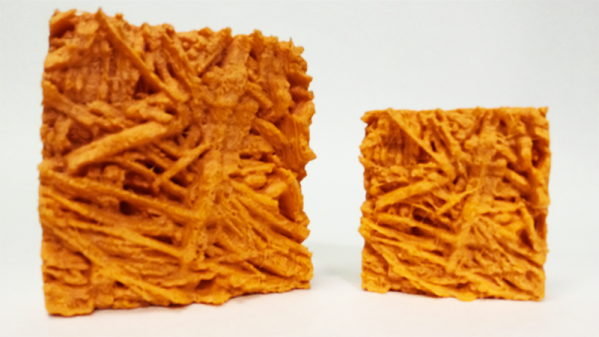[Andres] is working with an Atomic Force Microscope, a device that drags a small needle across a surface to produce an image with incredible resolution. The AFM can produce native .STL files, and when you have that ability, what’s the obvious next step? That’s right. printing atomic force microscope images.
The AFM image above is of a hydrogel, a network of polymers that’s mostly water, but has a huge number of crosslinked polymers. After grabbing the image of a hydrogel from an Agilent 5100 AFM, [Andres] exported the STL, imported it into Blender, and upscaled it and turned it into a printable object.
If you’d like to try out this build but don’t have access to an atomic force microscope, never fear: you can build one for about $1000 from a few pieces of metal, an old CD burner, and a dozen or so consumable AFM probes. Actually, the probes are going to be what sets you back the most, so just do what they did in olden times – smash diamonds together and look through the broken pieces for a tip that’s sufficiently sharp.











